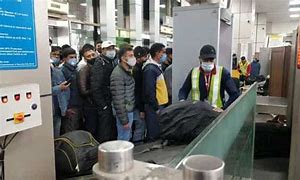Top News
Focus on Afghanistan, not Kashmir, India and Pakistan urged

Jaipur: Afghanistan, not Kashmir, can be the issue for India and Pakistan to resume a sustainable dialogue, where it will be relatively easier for them to reach agreement on issues like trade and security while ensuring peace for the “volatile” country , says a regional expert.
“Pakistan: A Hard Country” author Anatol Lieven, also stressed India and Pakistan must learn the Cold War lesson that nuclear powers have a greater responsibility. He also warned against abrogating the Indus Water Treaty or starting “water wars”.
“Don’t begin with Kashmir. Focus instead on Afghanistan,”he advocated, while strongly pitching for the two countries to resume talks.
“If (Afghan President) Ashraf Ghani can talk to Pakistan, Russia can talk to Pakistan, why can’t India (talk to Pakistan)… it doesn’t seem logical,” Lieven, professor at Georgetown University’s School of Foreign Service (Doha campus), told IANS at the recently-ended Jaipur Literature Festival 2015 , adding India will “never get anywhere” if every Pakistani statement on Kashmir or clash on the Line of Control (LoC) makes it call off talks.
Elaborating on why Afghanistan was a more feasible topic, Lieven, who notes there was a rethink on Pakistani policy towards it, said the”volatile” region impinges on security of both the countries.”Indian interests in Afghanistan have been attacked, while Pakistan accuses India of using Afghanistan as a base for attacks in Balochistan”.
Any agreement here will also help in success of trade talks, particularly the issue of transit of goods between India and Afghanistan and vice versa across Pakistan, he added.
Lieven however termed it “unfortunate” that domestic political considerations in both the countries become barriers to dialogue or trade.
“It is unfortunate, especially with the (new) Indian government and its assertive nationalism, though I am not sure how far it is a vote-winner apart from the BJP’s traditional right-wing constituency. It is not helpful and it is a great pity that India is missing an opportunity.
“In Pakistan, there are sections of industry and agriculture against normal trade with India and the government can face a backlash if it ignores them.”
Lieven, who in his book also stresses on the long-term environmental threats to Pakistan apart from the current ones of terrorism and insurgency, says a 2004 World Bank report on environmental issues makes “frightening reading” but in the 10 years since then, little has been done.”
“The situation is worse now in Pakistan which is a water scarce area and now faces greater demographic pressure. There is a possibility of a dangerous situation – though its not immediate or not even inevitable. Things still can be done.”
“But it is entwined with the stumbling state of its economy. Under the last three governments, from across the military and political spectrum, economic reforms have failed (unlike in India),” he said.
Given the recent criticism of the 1960 Indus Water Treaty, Lieven told IANS he hoped the agreement does not collapse. “But I think India will not adopt any harsh water policy against Pakistan as regards the Indus as it is quite possible as China could do the same with the Brahmaputra which will be hard for both northeastern India and Bangladesh.”
On Pakistan’s statement it would treat any Indian action affecting the Indus flow as a “declaration of war”, he said that Pakistan must learn after its Kargil misadventure.
“There is also the lesson of the Cold War that nuclear powers have great responsibility. The Soviet Union and the US never clashed in Europe though this would be no consolation to many Vietnamese, Angolans and others who became victims in various proxy wars,” he said.
Lieven, who has long covered the region – both as a journalist and now as an academician – said terrorism is still a problem for Pakistan though the situation is relatively better than in 2008 when the Taliban seemed to be spreading alarmingly.
“The Pakistani Taliban was more dangerous six years back. Since 2009, military offensives have pushed it back and there is a situation now where the Afghani Taliban leadership is in Pakistan and that of the Pakistani Taliban in Afghanistan,” he said.
Entertainment
Casino Days Reveal Internal Data on Most Popular Smartphones

International online casino Casino Days has published a report sharing their internal data on what types and brands of devices are used to play on the platform by users from the South Asian region.
Such aggregate data analyses allow the operator to optimise their website for the brands and models of devices people are actually using.
The insights gained through the research also help Casino Days tailor their services based on the better understanding of their clients and their needs.
Desktops and Tablets Lose the Battle vs Mobile
The primary data samples analysed by Casino Days reveal that mobile connections dominate the market in South Asia and are responsible for a whopping 96.6% of gaming sessions, while computers and tablets have negligible shares of 2.9% and 0.5% respectively.
The authors of the study point out that historically, playing online casino was exclusively done on computers, and attribute thе major shift to mobile that has unfolded over time to the wide spread of cheaper smartphones and mobile data plans in South Asia.
“Some of the reasons behind this massive difference in device type are affordability, technical advantages, as well as cheaper and more obtainable internet plans for mobiles than those for computers,” the researchers comment.
Xiaomi and Vivo Outperform Samsung, Apple Way Down in Rankings
Chinese brands Xiaomi and Vivo were used by 21.9% and 20.79% of Casino Days players from South Asia respectively, and together with the positioned in third place with a 18.1% share South Korean brand Samsung dominate the market among real money gamers in the region.
Cupertino, California-based Apple is way down in seventh with a user share of just 2.29%, overshadowed by Chinese brands Realme (11.43%), OPPO (11.23%), and OnePlus (4.07%).
Huawei is at the very bottom of the chart with a tiny share just below the single percent mark, trailing behind mobile devices by Motorola, Google, and Infinix.
The data on actual phone usage provided by Casino Days, even though limited to the gaming parts of the population of South Asia, paints a different picture from global statistics on smartphone shipments by vendors.
Apple and Samsung have been sharing the worldwide lead for over a decade, while current regional leader Xiaomi secured their third position globally just a couple of years ago.
Striking Android Dominance among South Asian Real Money Gaming Communities
The shifted market share patterns of the world’s top smartphone brands in South Asia observed by the Casino Days research paper reveal a striking dominance of Android devices at the expense of iOS-powered phones.
On the global level, Android enjoys a comfortable lead with a sizable 68.79% share which grows to nearly 79% when we look at the whole continent of Asia. The data on South Asian real money gaming communities suggests that Android’s dominance grows even higher and is north of the 90% mark.
Among the major factors behind these figures, the authors of the study point to the relative affordability of and greater availability of Android devices in the region, especially when manufactured locally in countries like India and Vietnam.
“And, with influencers and tech reviews putting emphasis on Android devices, the choice of mobile phone brand and OS becomes easy; Android has a much wider range of products and caters to the Asian online casino market in ways that Apple can’t due to technical limitations,” the researchers add.
The far better integration achieved by Google Pay compared to its counterpart Apple Pay has also played a crucial role in shaping the existing smartphone market trends.
Content provided by Adverloom

























